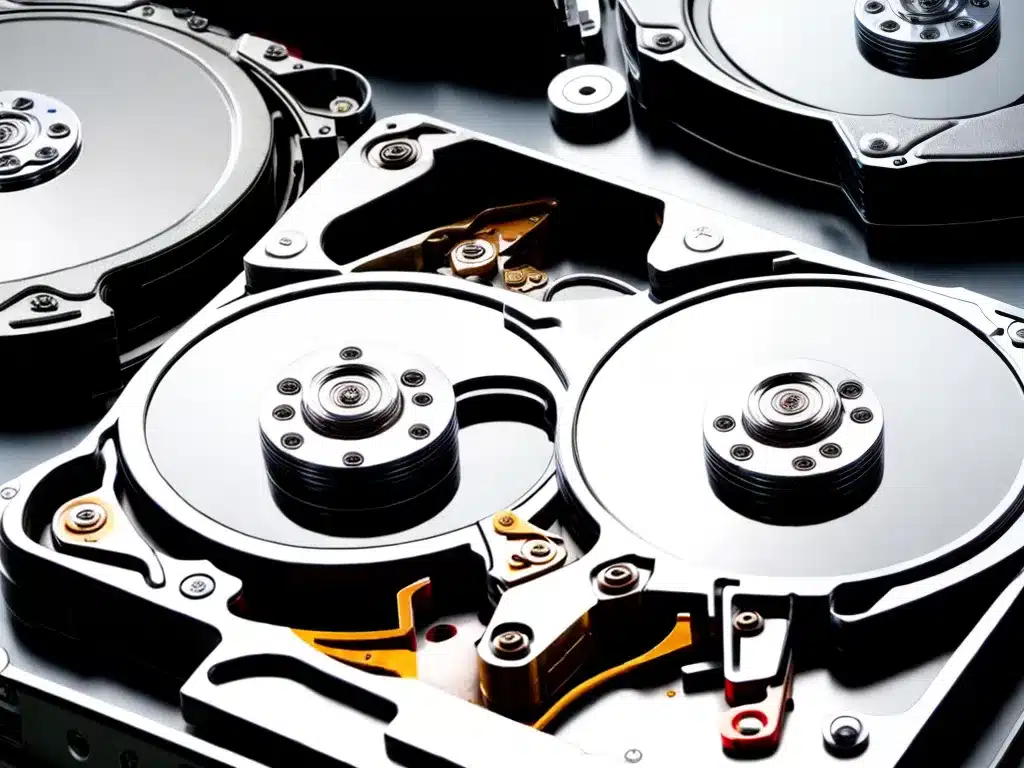
Restoring Data From a Failed Hard Drive
Introduction
Losing data from a failed hard drive can be devastating. Important files like family photos, financial documents, and creative projects may seem unrecoverable. However, there are several methods that can potentially restore data from a failed drive. In this guide, I will provide an in-depth overview of various data recovery techniques, software, and services that may help recover lost files.
Causes of Hard Drive Failure
Before attempting data recovery, it’s helpful to understand why hard drives fail in the first place. Some of the most common causes include:
-
Mechanical failure – The physical components of the drive wear out over time. Issues like the read/write heads malfunctioning or the motor failing will lead to inaccessibility.
-
Logical failure – The file system or partition tables get corrupted. The drive may seem okay physically but the storage contents are unreadable.
-
Accidental damage – Physical impacts, liquid spills, power surges, etc. can damage the drive’s delicate interior components.
-
Firmware corruption – Bugs or errors in the hard drive’s firmware can render stored data inaccessible.
-
Electrical failure – Issues with the PCB (printed circuit board) or chipset can prevent the drive from powering on and communicating with the computer.
Determine If The Drive Can Be Accessed
The first step is determining if the failed drive is detectable by your computer. Here are some things to try:
-
Connect the drive via SATA or USB and see if it shows up in your file explorer and Disk Management utility.
-
If the drive powers on but is not detected, try it in another computer. Also, inspect the data and power connectors for any damage.
-
Listen closely to the sounds the drive makes when powering up. Unusual clicking or grinding noises likely indicate mechanical failure.
-
If the drive is not spinning up at all, the PCB or enclosure may be faulty. Try removing the drive from its case and connecting it directly via SATA.
Attempt Non-Invasive Recovery Methods
If the drive is detected, first run through some non-invasive recovery methods that do not put the data at further risk:
-
Use data recovery software to scan the drive and reconstruct files from the filesystem data. Some popular options include Recuva, EaseUS Data Recovery Wizard, and Stellar Photo Recovery.
-
Access the disk using Linux – Ubuntu Live CD allows you to mount drives that may not open on Windows. The linux filesystem drivers can sometimes read drives with corrupted sectors/tables.
-
Make a clone image of the drive before attempting repairs. This preserves the current state of the data for recovery software to scan. Use DDRescue or HDClone tools.
-
Check for apparent signs of firmware corruption. Reset the drive, update firmware via jumpers, or perform low-level format if applicable.
Advanced In-Lab Data Recovery Techniques
If basic recovery methods fail, the drive likely has physical issues. Seeking professional lab data recovery services could help extract data in these cases:
-
Head/media replacement – Specialist labs can swap out failed drive heads and platters. Donor parts can read data from healthy sectors.
-
Repairing PCB – For drives with electronic issues, PCB components can be repaired or replaced to regain functionality.
-
Data imaging – Labs use specialized tools to make a complete raw bit-for-bit image of drive contents, even from heavily damaged drives.
-
Proprietary recovery methods – Vendors have advanced internal procedures, specialized equipment, and cleanroom facilities to reconstruct data.
However, lab recovery can cost thousands of dollars with no guarantee of success. Evaluate the importance of lost data against expenses.
Preventing Hard Drive Failure
While data recovery methods exist, prevention is ideal:
-
Handle drives gently and ensure proper airflow to avoid overheating.
-
Maintain up-to-date backups – RAID, external drives, or cloud backups protect against failure.
-
Consider using enterprise-grade drives designed for 24/7 operation. Consumer models are less reliable.
-
Check SMART status using tools like CrystalDiskInfo to monitor drive health and catch issues early.
-
Upgrade older drives – Newer models are less prone to wear and tear failures over time.
Conclusion
Recovering lost data from failed hard drives is often possible with the right tools, techniques, and persistence. First attempt non-invasive software recovery, then escalate to professional labs for physical issues. However, frequently backing up important files provides the best protection if a drive fails. With proper precautions, you can minimize both the likelihood and impact of catastrophic drive failure.












